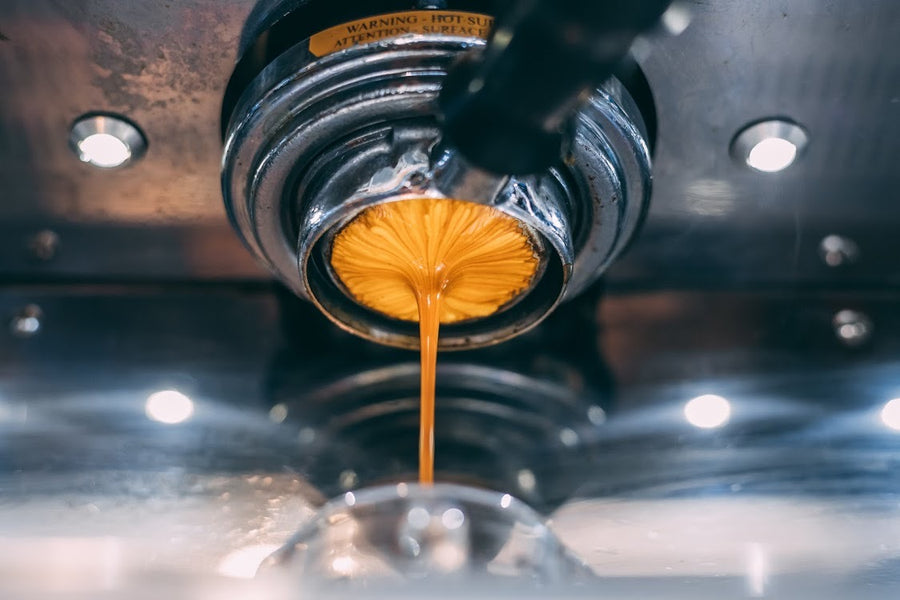SOE Single Origin Espresso – A Thoughtful Gift for Coffee Aficionados
SOE Single Origin Espresso – A Thoughtful Gift for Coffee Aficionados
Blog Article
Comprehending Coffee Beans: the Journey From Coffee to Blended Coffee Beans

The Beginnings of Coffee: A Worldwide Perspective
While you could think about coffee as a modern-day staple, its origins trace back centuries, linking with societies around the world. The story begins in Ethiopia, where legend says a goat herdsman named Kaldi discovered the energizing results of coffee beans after discovering his goats romping vigorously after eating them. This triggered passion, leading to coffee's spread to Arab investors that valued the made drink. By the 15th century, it reached Persia, Egypt, and Turkey, where coffeehouses came to be social hubs for conversation and culture.
As trade routes broadened, coffee made its way to Europe in the 17th century, quickly gaining appeal. It transformed from a mystical drink into an everyday routine, motivating celebrations and intellectual exchanges. Each culture included its one-of-a-kind twist to coffee preparation, enhancing its history. This worldwide trip highlights exactly how coffee links us, transcending borders and unifying varied practices through a basic bean.
Growing and Harvesting of Espresso Beans
As coffee's journey progressed, the focus shifted to the growing and harvesting of particular bean selections, especially those used for coffee. You'll locate that coffee beans usually originate from Arabica or Robusta plants, each offering distinct flavors. The suitable growing conditions include high elevations and rich, well-drained dirt, which improve the beans' high quality.
Throughout the harvest, picking techniques vary. Timing is essential; you want to harvest when the cherries get to peak perfection for maximum flavor.
Once collected, the beans are planned for handling, which is crucial in determining their last preference. Understanding the growing and gathering procedures gives you understanding into what goes right into your preferred coffee, enhancing your appreciation for every cup.
Processing Techniques: From Cherry to Bean
Since you have actually found out about gathering coffee beans, let's explore how those cherries transform into the coffee beans you enjoy. You'll see how different harvesting methods influence flavor, adhered to by the vital actions of fermentation and drying out. Finally, we'll break down the milling and grading process that identifies your coffee's quality.
Harvesting Techniques Discussed
When it comes to coffee, comprehending harvesting strategies is crucial, given that they straight impact the taste and top quality of the beans you enjoy. There are 2 primary techniques: selective picking and strip picking. Selective selecting involves hand-picking only ripe cherries, guaranteeing you obtain the best high quality beans. This technique usually brings about a richer flavor account, though it's more labor-intensive. On the various other hand, strip selecting ways harvesting all cherries simultaneously, regardless of ripeness. While it's quicker and more affordable, this can cause a mix of flavors, affecting the end product. Ultimately, the selection of gathering technique can considerably affect your coffee experience, so it's worth recognizing just how those beans made it to your mug.
Fermentation and Drying Out
After gathering, the following action in handling coffee beans play a substantial role fit their flavor. You'll discover that fermentation is important, as it helps break down the mucilage surrounding the beans, improving their preference profile. Relying on the method, this process can last from a few hours to numerous days, with differing results based upon temperature level and moisture.
When fermentation is complete, drying complies with, which is equally important. You can pick from sun-drying or mechanical drying approaches. Sun-drying allows the beans to take in flavors from the atmosphere, while mechanical drying out assurances regular dampness levels no matter climate. Proper drying out is important to stop mold and protect the beans' quality, inevitably affecting your cup of coffee.
Milling and Grading Process
As fermentation and drying established the stage for taste advancement, the milling and grading process warranties that only the best coffee beans make it to your mug. This phase includes removing the outer layers of the coffee cherry, consisting of the parchment and husk. High-grade beans get a greater quality, resulting in a richer coffee experience.
Toasting Techniques: Opening Flavor Prospective
When you roast coffee beans, the technique you choose can significantly influence the flavor profile. Understanding the relationship in between time, temperature level, and roasting techniques is key to exposing the potential of your mixture. Let's explore exactly how these components come with each other to develop the ideal mug.
Toasting Methods Clarified
While you may think that all coffee toasting approaches generate the same outcomes, the reality is that each technique exposes distinct taste capacities in the beans. Drum toasting makes use of a rotating drum to evenly distribute warmth, improving caramelization and creating a well balanced taste. Air roasting, on the various other hand, distributes hot air around the beans, promoting a lighter roast with noticable acidity.

Influence on Flavor Profile
Different roasting methods not just influence the procedure but also significantly impact the taste account of the coffee beans. When you select a light roast, you'll experience brilliant acidity and floral notes, showcasing the bean's beginning. In comparison, a tool roast balances acidity with sweetness, frequently disclosing chocolatey undertones. Dark roasts, on the various other hand, highlight vibrant, great smoky flavors, occasionally concealing the bean's distinct features. Each strategy discloses various oils and substances, causing a broad array of tastes. By try out various toasting styles, you can discover which accounts reverberate with your taste. Comprehending these nuances aids you appreciate the virtuosity behind your mug of coffee, enhancing your general experience with every sip.
Time and Temperature Aspects
To launch the full flavor possibility of coffee beans, both time and temperature during the toasting procedure play substantial functions. When toasting, you'll locate that higher temperatures can rapidly create flavors, yet if you rush it, you could wind up with charred notes. Alternatively, reduced temperatures permit an extra steady flavor growth, showcasing the beans' special features.

Timing is equally as vital; prolonging the roast as well long can lead to a loss of level of acidity and brightness, while also short a roast may leave the beans underdeveloped. Locating that wonderful place calls for method and trial and error. By readjusting these elements, you can reveal the rich, complex flavors concealed within each bean, developing a really remarkable coffee experience.
The Art of Mixing: Crafting Unique Coffee Profiles

Begin by selecting a base coffee that gives a solid structure. An intense Ethiopian bean can bring fruitiness, while a rich Brazilian coffee includes body.
As you mix, keep in mind that each mix informs a tale. You're not just making coffee; you're developing an experience. Take your time, preference regularly, and enjoy the journey of finding your signature blend - Single Origin Espresso.
Developing Approaches: Exactly How Prep Work Influences Flavor
Mixing coffee opens up a domain of flavor opportunities, but how you make that blend can substantially influence your final cup. Various developing methods extract distinct tastes and scents, so it's critical to pick sensibly. A French press permits sediments and oils to continue Single Origin Espresso to be, creating an abundant, full-bodied experience. On the other hand, a pour-over highlights the coffee's clearness and brightness, perfect for showcasing delicate notes.
Espresso, with its high stress, generates a concentrated shot that highlights sweet taste and crema. If you prefer a lighter brew, take into consideration a chilly brew approach; it produces a smooth, less acidic taste.
Changing variables like water temperature level, grind dimension, and make time can transform your coffee's account. Embrace the art of brewing to find the flavors hidden in your coffee blends.
The Future of Coffee: Sustainability and Development
As the coffee industry develops, sustainability and technology are ending up being essential for addressing ecological challenges and conference consumer needs. You'll observe that more coffee business are adopting green methods, from sourcing beans morally to implementing lasting farming techniques. These changes not just aid the planet however additionally boost the quality of the coffee you delight in.
You may see developments like eco-friendly product packaging and water-saving developing approaches that reduce waste. Advanced innovation, such as blockchain, is additionally becoming prominent, guaranteeing openness in the supply chain, which enables you to trace your coffee back to its origins.
Furthermore, buying local areas and sustaining farmers with reasonable trade efforts cultivates a more sustainable coffee environment. As you sip your following mug, remember that your choices can add to a brighter future for coffee. By going with sustainable brands, you're not just enjoying a beverage; you're making a favorable influence on the globe.
Regularly Asked Inquiries
What Is the Distinction In Between Arabica and Robusta Beans?
Arabica beans are smoother, sweeter, and have a higher level of acidity, while robusta beans are stronger, extra bitter, and consist of even more high levels of caffeine. When making your coffee., you'll discover these differences in flavor and scent.
How Does Altitude Affect Coffee Bean Taste?
Elevation impacts coffee bean taste substantially. Higher elevations generate beans with brighter acidity and complex tastes, while lower altitudes often yield beans that are heavier and less nuanced. You'll discover these distinctions in your cup!
What Are the Health And Wellness Conveniences of Alcohol Consumption Coffee?
Consuming coffee can enhance your energy, improve mental focus, and also enhance physical efficiency. It's abundant in anti-oxidants, may decrease the danger of particular illness, and can advertise a much healthier metabolism when eaten in small amounts.
Can Coffee Beans Be Reused for Developing?
Yes, you can reuse coffee beans for developing, but the flavor could be weaker. If you appreciate exploring, attempt recycling them in various ways, like chilly brews or including to healthy smoothies for an additional kick.
Just how Should I Store Coffee Beans for Quality?
To maintain your coffee beans fresh, save them in an impermeable container in a trendy, dark area. Stay clear of revealing them to warmth, moisture, or light, as these elements can swiftly weaken their taste and scent.
Recognizing Coffee Beans: the Journey From Espresso to Blended Coffee Beans.
Now that you have actually discovered regarding collecting espresso beans, let's explore how those cherries transform right into the coffee beans you love.When you roast coffee beans, the method you pick can significantly influence the taste account - Single Origin Espresso.While you may assume that all coffee toasting methods generate the exact same results, the fact is that each technique discloses special taste potentials in the beans.Various roasting methods not just affect the procedure yet also substantially impact the flavor account of the coffee beans
Report this page